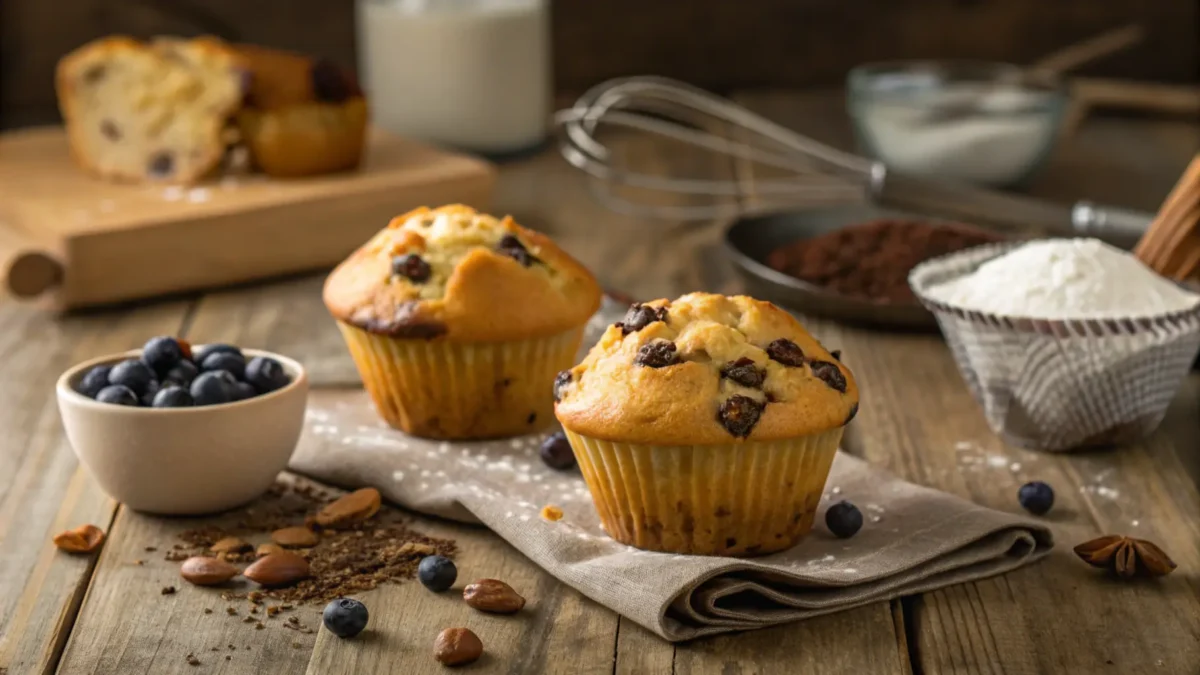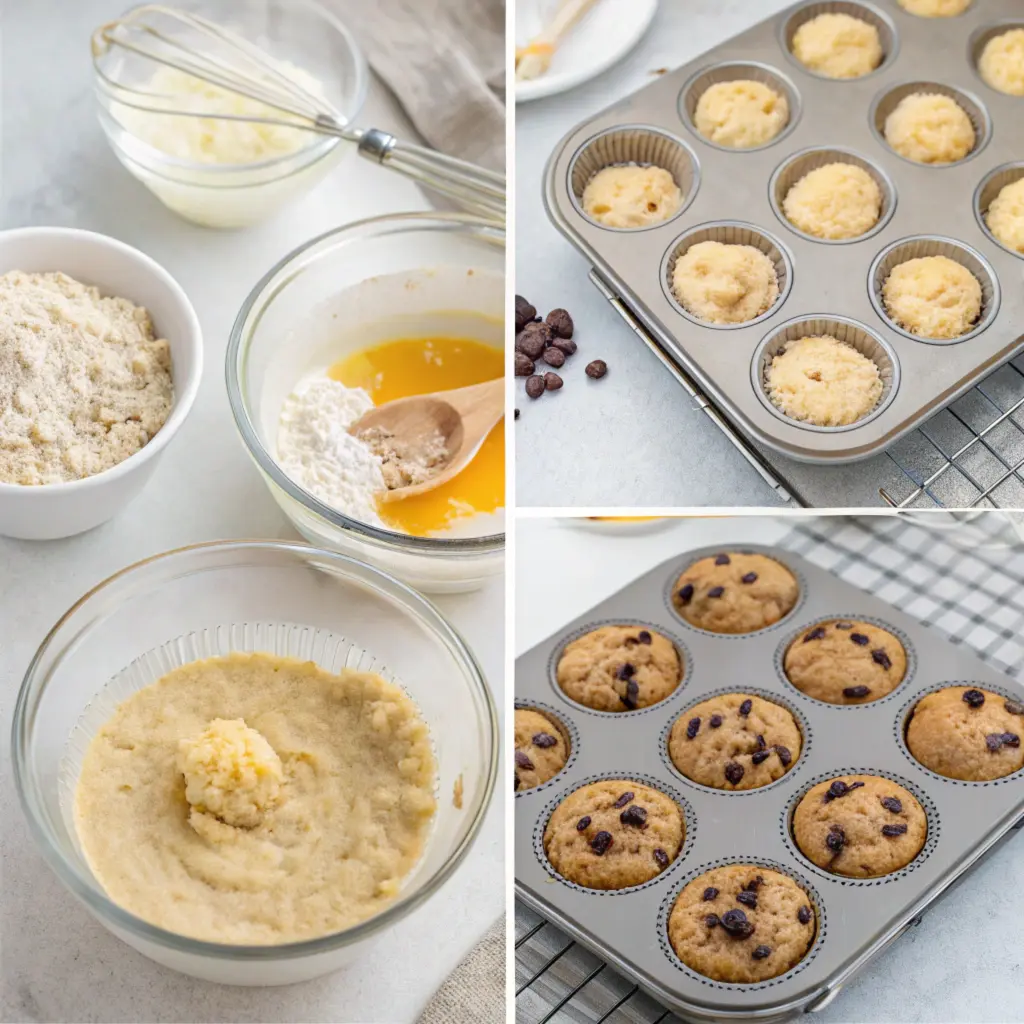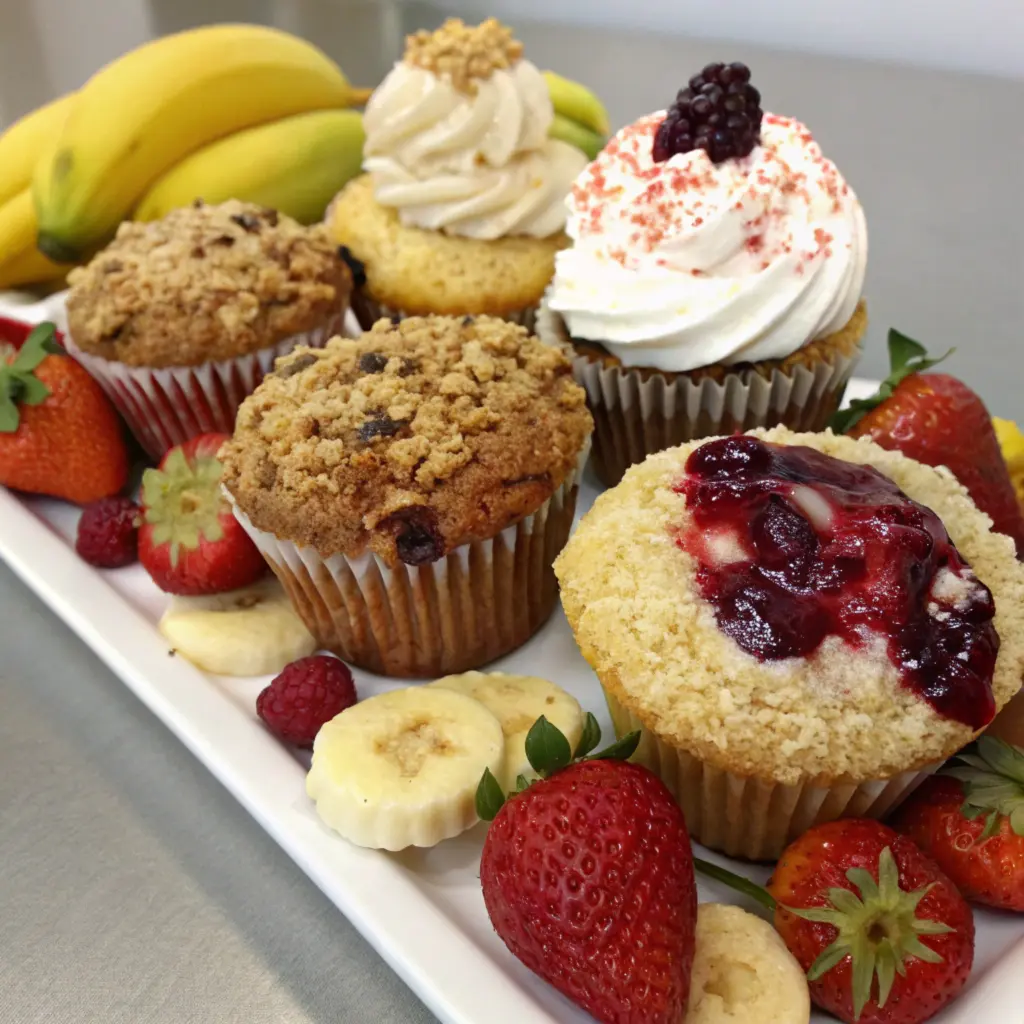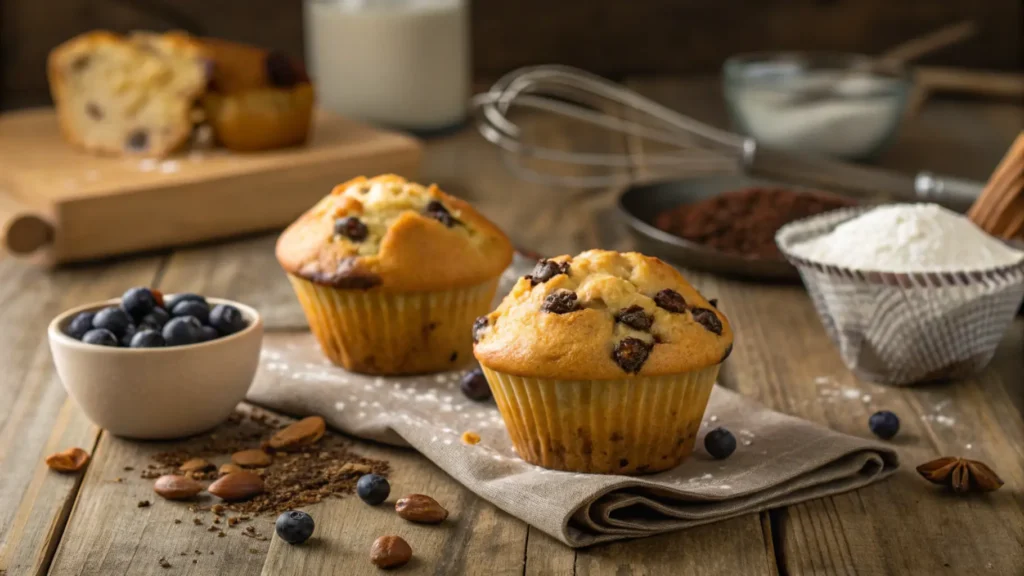Understanding the Basics of Moist Muffins
There’s nothing worse than biting into a muffin that’s dry, crumbly, or just plain tough. If you’ve ever wondered what the secret to moist muffins is, you’re not alone. The good news? Achieving bakery-level moistness isn’t rocket science. With the right ingredients, techniques, and a little attention to detail, you can bake muffins so moist they’ll melt in your mouth. In this article, we’ll uncover the most effective tips and tricks for creating muffins that are tender, fluffy, and utterly irresistible. Let’s dive in!

Why Are Muffins Dry?
Dry muffins often result from a combination of common baking missteps. Overmixing the batter is a big culprit—it develops too much gluten, which leads to a dense, dry texture. Similarly, adding too much flour or too little fat can strip your muffins of moisture. Even baking at the wrong temperature can suck the life out of what should be a tender, fluffy treat.
Another mistake? Ignoring the role of fat and liquid. Many assume the liquid is what keeps muffins moist, but fats like butter and oil play a bigger role. Without the right balance of these ingredients, you’ll end up with dry, lackluster muffins.
What is Moist Muffins ?
The secret to moist muffins lies in a careful balance of ingredients and proper technique. Using ingredients like yogurt, sour cream, or fruit puree can boost moisture while adding flavor. Choosing oil over butter—or combining the two—also makes a difference, as oil provides a softer crumb, while butter adds richness.
In addition, how you mix your ingredients matters. Combine the wet and dry components separately before gently folding them together. This prevents overworking the batter, which is key to keeping muffins light and tender.
With the basics covered, let’s move on to the essential ingredients that make all the difference in the next section. Stay tuned!
Essential Ingredients for Moist Muffins
Fats and Oils
When it comes to the secret to moist muffins, fats and oils are non-negotiable. They are the backbone of a soft, tender texture. But what should you use—oil or butter?
- Oil: If you’re aiming for maximum moisture, oil is your best bet. It doesn’t solidify like butter when cooled, which keeps muffins soft even after they’ve cooled down. Vegetable oil or canola oil works wonders for moist muffins.
- Butter: Butter, on the other hand, brings a rich, flavorful depth to your muffins. While it may not provide the same level of moisture as oil, the flavor it adds is unmatched.
- Best of Both Worlds: For muffins that are both moist and flavorful, try a combination of butter and oil. You’ll get the softness from the oil and the richness from the butter.
Liquid Additions
Adding the right liquids is another crucial element in the secret to moist muffins. While water might work in a pinch, richer liquids like buttermilk or yogurt do so much more.
- Buttermilk or Sour Cream: These tangy ingredients not only add moisture but also react with baking soda to give your muffins a light, airy texture.
- Greek Yogurt: Thick and creamy, Greek yogurt brings both moisture and a slight tang, making it an excellent choice for sweet or savory muffins.
- Fruit or Vegetable Puree: Adding mashed bananas, applesauce, or grated zucchini is another easy way to keep your muffins moist. Plus, these additions add natural sweetness and flavor.
With the right combination of fats and liquids, you’re halfway to baking the perfect muffin. Next, we’ll explore the techniques that ensure your muffins turn out tender and moist every time.
Step-by-Step Tips for Perfect Moist Muffins

Measuring Ingredients Accurately
One of the most overlooked aspects of the secret to moist muffins is accurate measuring. Too much flour or too little liquid can ruin the texture of your muffins.
- Flour: Always spoon flour into your measuring cup, then level it off with a knife. Scooping flour directly from the bag packs it down, leading to dry muffins.
- Liquids and Fats: For liquids like milk or oil, use a liquid measuring cup to ensure accuracy. Small mistakes here can throw off the balance of your batter.
Mixing the Batter
The way you mix your muffin batter has a huge impact on the final texture. Overmixing is a common mistake that leads to dense, dry muffins.
- Start with Separate Bowls: Combine your dry ingredients (flour, sugar, baking powder, salt) in one bowl and your wet ingredients (eggs, milk, oil) in another.
- Fold, Don’t Beat: When it’s time to mix the wet and dry ingredients together, gently fold them with a spatula. Aim for a lumpy batter—overmixing develops gluten, making muffins tough.
- Add Mix-Ins Last: If you’re adding fruit, nuts, or chocolate chips, fold them in at the very end to avoid breaking them up too much.
By measuring carefully and mixing gently, you’ll avoid the common pitfalls that lead to dry muffins. In the next section, we’ll cover baking tips to help you achieve perfectly moist muffins every single time.
Step-by-Step Tips for Perfect Muffins
Creating moist, tender muffins isn’t just about ingredients—it’s about how you mix them. Follow these simple steps to ensure your muffins come out soft and delicious every time.
Measure Ingredients Correctly
Accurate measuring is one of the most important parts of baking. A small mistake can mean the difference between fluffy and dry muffins.
- Flour: Use the spoon-and-level method to measure your flour. Scoop flour into the measuring cup with a spoon, then level it off with a knife. Avoid packing it in, as this can lead to dense muffins.
- Liquids: Measure milk, oil, or other liquids in a liquid measuring cup. This ensures you have the exact amount needed to keep your muffins moist.
Mix Wet and Dry Ingredients Separately
The secret to a smooth, even batter lies in keeping your wet and dry ingredients separate until the last step.
- Combine Dry Ingredients: In a large bowl, whisk together flour, sugar, baking powder, and salt. Whisking aerates the mixture and prevents clumps.
- Mix Wet Ingredients: In a separate bowl, lightly beat the eggs, then stir in your milk, oil, or other liquids.
Gently Fold the Batter
When it’s time to combine the wet and dry ingredients, be gentle. Overmixing the batter can overdevelop gluten, leading to dense muffins.
- Fold, Don’t Stir: Use a spatula to fold the wet ingredients into the dry ones. Aim for a lumpy batter—overmixing smooths it out, which is not what you want.
- Add Mix-Ins Last: If you’re including fruit, nuts, or chocolate chips, gently fold them in at the very end. Toss fruit in a little flour first to prevent it from sinking to the bottom of the muffins.
By taking these steps, you’ll create a batter that’s perfectly balanced for soft, tender muffins. Up next, we’ll look at baking techniques to lock in that moisture and ensure your muffins are just right!
Baking Muffins to Perfection
Finding the Right Temperature
One of the secrets to moist muffins is baking them at the correct temperature. Preheating your oven is non-negotiable—consistent heat is crucial for muffins to rise properly and lock in moisture. Most muffin recipes call for baking at 375°F (190°C). However, you can try starting at 400°F (200°C) for the first five minutes to give the muffins an extra lift, then lowering it to 375°F for the remaining bake time.
A properly calibrated oven is key. Too high, and the muffins will brown too quickly, leaving the inside undercooked and dry. Too low, and the muffins will take too long, losing moisture in the process.
Baking Times and Testing for Doneness
The right baking time varies depending on the recipe, but most muffins take 18–25 minutes. To avoid overbaking, check your muffins around the 18-minute mark by inserting a toothpick into the center. If it comes out clean or with a few crumbs, they’re ready!
Once baked, allow the muffins to cool in the pan for 5 minutes before transferring them to a wire rack. Cooling in the pan for too long traps steam, which can lead to soggy bottoms. By following these baking tips, you’ll master the art of moist, perfectly baked muffins.
For more tips on achieving bakery-quality muffins, check out Makouri Recipes’ Strawberry Muffins Guide.
Creative Ways to Enhance Moisture
Adding Fruits and Vegetables
Incorporating fresh fruits or vegetables is one of the secrets to moist muffins. Ingredients like mashed bananas, shredded zucchini, or applesauce not only enhance flavor but also add natural moisture. These additions are perfect for creating muffins that are both tender and nutritious.
For example, adding a half-cup of mashed bananas to the batter gives muffins a sweet, tropical twist while keeping them soft. Similarly, grated carrots or zucchini blend seamlessly into the batter, adding subtle flavor and extra hydration.
Topping Ideas for Added Texture
Adding a topping to your muffins can help lock in moisture while also boosting their appeal. A crumb topping made with butter, flour, and sugar adds a crunchy texture and helps keep the muffins from drying out.
For a sweeter finish, drizzle a glaze over the muffins after they’ve cooled. Mix powdered sugar with a touch of milk and vanilla for a simple yet delicious topping. Another option is a honey drizzle, which adds flavor and helps maintain the muffins’ moisture.

These creative ideas ensure your muffins are moist, flavorful, and visually appealing. By using these tips and tricks, you’ll take your muffins from ordinary to extraordinary!
Frequently Asked Questions (FAQs)
What is the Best Fat for Muffins?
When it comes to the secret to moist muffins, choosing the right fat is key. Oil, such as vegetable or canola oil, is often considered the best option because it provides consistent moisture and keeps muffins soft, even after cooling. Butter, while less effective in maintaining moisture, adds a rich flavor that’s hard to beat. For the best of both worlds, try using a combination of oil for moisture and butter for flavor.
Can I Fix Dry Muffins?
Yes, you can rescue dry muffins! One trick is to lightly brush the tops with a simple syrup (a mix of sugar and water) while they’re still warm. This adds a touch of moisture and sweetness. Another option is to wrap the muffins in a damp paper towel and microwave them for 10–15 seconds, which helps rehydrate them.
What’s the Key to Fluffy Muffins?
The secret to fluffy muffins lies in the mixing technique and leavening agents. Avoid overmixing the batter, as this can lead to dense muffins. Instead, fold the wet and dry ingredients together gently, leaving a few lumps. Additionally, ensure your baking powder or baking soda is fresh—it plays a crucial role in helping the muffins rise and become airy.
Conclusion
Why Knowing the Secret to Moist Muffins Matters
Creating perfectly moist muffins isn’t just about following a recipe—it’s about understanding the ingredients and techniques that make them shine. By mastering the secret to moist muffins, you’ll elevate your baking skills and consistently produce treats that everyone loves. From using the right fats and liquids to avoiding common mistakes like overmixing, small adjustments make a big difference.
Moist muffins are not only delicious but also versatile. Whether you’re making a classic blueberry muffin, a decadent chocolate chip variation, or a healthier option with zucchini, the principles remain the same. With these tips, your muffins will turn out perfect every single time.
Final Thoughts and Call to Action
Are you ready to put these tips to the test? The next time you bake, incorporate these simple secrets to ensure moist, flavorful muffins that everyone will adore. For more baking inspiration, check out Makouri Recipes and explore their wide range of ideas to keep your kitchen adventures exciting. Happy baking!




3 thoughts on “The Secret to Moist Muffins: A Baker’s Guide”